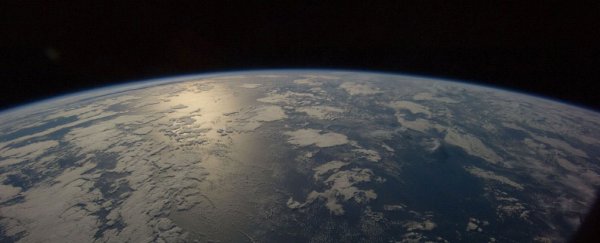More than 25 years ago, one of the most famous photographs of Earth – the "Pale Blue Dot" – was taken by the Voyager 1 space probe as it scooted past Pluto on 14 February 1990. The image, which shows our home as a minuscule, faint pixel among the vast emptiness of space, highlights just how alone we are in the Universe.
Or does it? Could that dim glimmer of blue be used to help find life elsewhere in the cosmos? And are other habitable planets the same colour? Those are the questions being posed by a new study, which investigates whether the colour of our planet could be the key to its life-sustaining features.
Using a technique called photometry, which measures the intensity of electromagnetic radiation, a team from the University of Washington found that colours can indeed tell you a lot about the composition of a world – but you need to be careful, because the fact that a planet's blue doesn't necessarily mean it's habitable.
"One important takeaway is that colour should be used with caution because we found it's relatively easy to [detect] lifeless planets that are pale blue in colour," one of the researchers, Joshua Krissansen-Totton, told Adam Hadhazy at Astrobiology Magazine. "With that said, I was very excited to find that Earth's spectrum has an intriguing signature that is biogenic, unique, and potentially quite useful."
Earth's blueness is a result of what's called Rayleigh scattering – the way that sunlight scatters off molecules in our atmosphere - which makes the sky look blue when you look up. This blue glow also extends into space, which is why the Pale Blue Dot is a thing.
Atmospheric conditions on other planets can also give off a blue sheen, but that doesn't mean you'd want to live there. For example, the researchers say one of the planets in our Solar System famous for being red wasn't always that way.
"Our cosmic neighbour Mars may have even been a pale blue dot earlier in its history when it had a thicker carbon dioxide atmosphere, as would icy exoplanets with thick nitrogen atmospheres," Krissansen-Totton told Astrobiology Magazine. "I think this is a good reason to be wary when interpreting the colours of exoplanets. There are many potential false positives, and planets that look alike at first may in fact be radically different."
But while the colour alone can be a red herring (ahem), the reflectance spectrum of light that a planet gives off is another story. In Earth's case, the researchers say this U-shaped spectral signature could be a telltale sign that a world is indeed habitable. As Hadhazy explains:
"Its up-down-up shape derives from the very features that make Earth a pale blue dot in the first place: Rayleigh scattering in the bluer portion of the spectrum; some absorption in the greener portion because of the ozone in our atmosphere, which like the oxygen we breathe would not exist without life; and finally red light, again owing to continental reflectance, but also from the Earth's widespread vegetation that reflects strongly in infrared."
When you combine the capacity to measure for this light range with other factors concerning exoplanet habitability, you could be on to something.
At the very least, the researchers say it would help astronomers narrow down the pool of potentially life-supporting exoplanets to study.
"Finding a terrestrial planet in the habitable zone with a U-shape spectrum would be incredibly exciting," said Krissansen-Totton. "The U-shape spectrum could then help distinguish between a real pale blue dot and the false positives, which don't have the same spectral shape."
The findings have been reported in The Astrophysical Journal.
